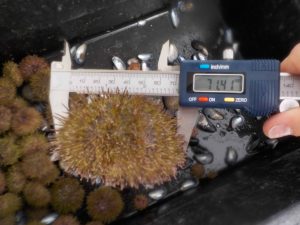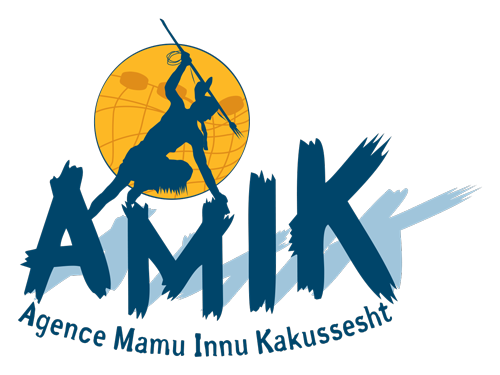 The seven member communities, which make up AMIK, practice food and ceremonial fishing activities as well as commercial fishing. AMIK participates in commercial fishing activities by managing certain fishing vessels. For more information on the fishing activities of each community, please consult the data sheets for our member communities.
The seven member communities, which make up AMIK, practice food and ceremonial fishing activities as well as commercial fishing. AMIK participates in commercial fishing activities by managing certain fishing vessels. For more information on the fishing activities of each community, please consult the data sheets for our member communities.
Following the objectives laid out by the AAROM, AMIK has the mandate to help its member communities participate in the integrated and sustainable management of marine resources in an informed way. In an integrated management model, all environmental (ecosystems), social (stakeholders and their needs), economic (practices and issues) and theoretical (scientific, cultural and Traditional Indigenous knowledge) components are taken into account. This ensures the long-term conservation of aquatic resources and oceans as well as securing the livelihood of jobs in the fishing and tourism industries for future generations.
To make this possible, AMIK runs a strategic monitoring group that gathers information relating to resource management in the fishing industry. They promote networking, continuous education, awareness and natural resource conservation efforts. The agency also represents community interests in local, national and international forums and sits on provincial and federal fisheries and maritime resource management committees.
AMIK participates in consultation committees on endangered species and peer reviews organized by Fisheries and Oceans Canada and other bodies, with a particular emphasis on species such as the snow crab, Arctic surfclam, whelk, Greenland halibut and northern shrimp.
AMIK’s Director General and Fisheries Manager represent their members in meetings, in general assemblies and on boards of directors in the fishing industry, such as the Alliance des pêcheurs professionnels du Québec (APPQ), Canadian Council of Professional Fish Harvesters (CCPFH), Créneau d’excellence ACCORD Ressources, sciences et technologies marines, Merinov, Centre d’innovation de l’aquaculture et des pêches du Québec, the Regroupement des pêcheurs professionnels de la Haute et de la Moyenne-Côte-Nord (RPPHMCN) and the Canadian Fisheries Research Network (CFRN).
Community members are directly implicated in important decision-making with Fisheries and Oceans Canada and other marine resource management bodies, who regard the Innu community as expert partners in the field.
For more information on AMIK’s implication in fisheries management, training or fishing activities, please contact Serge Langelier, Fisheries Manager.
Projects in sustainable fisheries management
Oceans cover 70% of the Earth’s surface.
To ensure that future generations can continue to fish, it is essential to know how to sustainably manage the species we fish commercially or that could be exploited in a commercial way. To ensure that future generations can continue to fish, it is essential to know how to sustainably manage the species we fish commercially or that could be exploited in a commercial way.
Examples of Achievements:
- Biomass Assessment of the Green Sea Urchin at the Mouth of the Saguenay Fjord (2016-17)
- Biomass Assessment of Icelandic Scallops in the Baie de Sept-Îles (2015/16)
- Biomass Assessment of Soft-Shell Clams in Pessamit (2014/16)
- Creation of an Innu Round Table on the Management of Atlantic Salmon (2015)
- Atlantic Salmon Conservation Through the Promotion of Traditional Indigenous Knowledge in Innu Communities on the North Shore (2012/14)
- Assessment of Fishing Potential for American Lobster in the Baie de Sept-Îles (2013)
- Algal Biomass Assessment of the North Shore of the Saint Lawrence River Between Tadoussac and Havre-St-Pierre (2011/12)
- Exploratory Whelk Fishing Northwest of Anticosti Island (2011)

